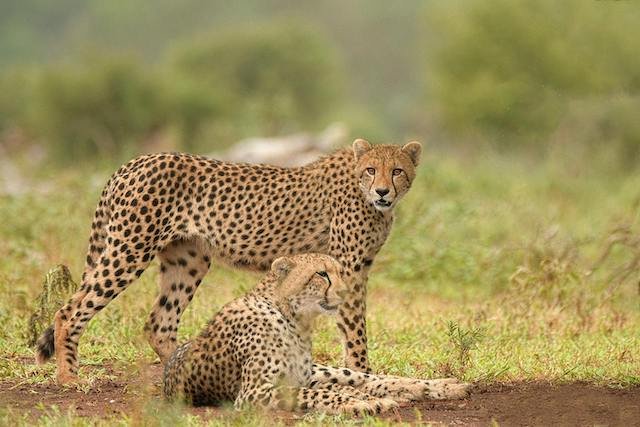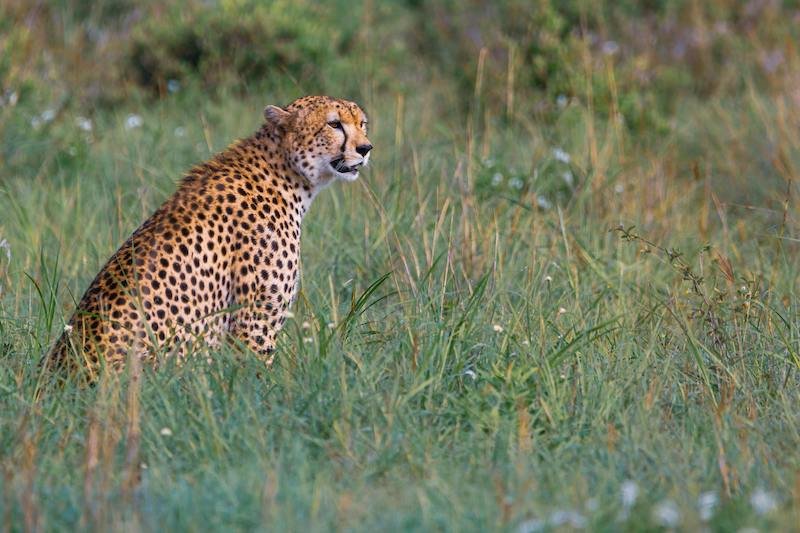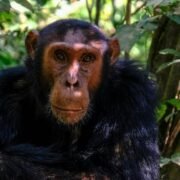
Cheetah in Uganda: Where to See Africa’s Fastest Cat

The cheetah in Uganda is a rare and thrilling sight for safari lovers. Known for being the fastest land mammal, this sleek and spotted predator is only found in specific parts of Uganda’s wilderness. While lions and leopards are more widespread, the cheetah is much harder to find—making every sighting a true highlight. This article explores everything you need to know about cheetahs in Uganda: their species, breeding season, gestation, behavior, and the best parks to see them in.
Species of Cheetah in Uganda
Uganda is home to the East African cheetah (Acinonyx jubatus raineyi), a subspecies adapted to the open savannas and arid landscapes of northeastern Uganda. These cheetahs are lighter in build than leopards, with a slender frame, black “tear marks” running from their eyes to their mouth, and long, muscular tails that help them balance at high speeds.
Unlike lions or leopards, cheetahs rely on speed rather than strength. Their semi-retractable claws, flexible spine, and large nasal passages make them nature’s ultimate sprinters, reaching speeds of up to 112 km/h (70 mph) in short bursts.
Breeding Season and Gestation of Cheetahs in Uganda
Cheetahs in Uganda do not have a fixed breeding season. Mating can happen year-round, although activity may increase during the dry season when prey is more concentrated. Female cheetahs reach sexual maturity at around 2 years of age, while males mature slightly later.
Once pregnant, the gestation period lasts about 90–95 days, resulting in a litter of 3 to 5 cubs. Cubs are born with a silvery mane that offers camouflage in tall grasses and deters predators. They remain hidden for the first few weeks, and only around 10% survive to adulthood due to threats from lions, hyenas, and even eagles.
Cheetah Population in Uganda’s National Parks
Cheetahs are critically endangered in Uganda and are currently found in only one protected area: Kidepo Valley National Park. According to the Uganda Wildlife Authority (UWA), the population is estimated at fewer than 30 individuals—making them one of the rarest carnivores in the country.
Because of this low number, Uganda’s cheetahs are under active conservation monitoring, and Kidepo’s open savannas provide the most suitable habitat to support their survival.
🧭 Visit the Uganda Wildlife Authority for the latest conservation updates.
Where to Find Cheetah in Uganda
Kidepo Valley: Best Park to See Cheetahs in Uganda
Kidepo Valley National Park, located in Uganda’s remote northeastern Karamoja region, is the only place where visitors can reliably spot cheetahs. The park’s vast savanna, low tourist numbers, and rich prey population make it ideal for cheetahs to hunt and thrive.
Kidepo is also home to lions, leopards, giraffes, elephants, and over 475 bird species, offering a rich safari experience. Game drives at dawn or dusk offer the best chance to see cheetahs on the move, often scanning the horizon from termite mounds or stalking gazelles in the grass.
Best Time to Visit
The dry seasons (June–August and December–February) are ideal for wildlife viewing in Kidepo. With vegetation thinner and animals concentrated near waterholes, it becomes easier to spot cheetahs as they move through the plains in search of prey.
Physical Traits of the Ugandan Cheetah
Cheetahs are easily distinguished from other big cats by their:
- Light yellow coat covered with solid black spots
- Black “tear marks” that help reduce glare from the sun
- Small head and long neck
- Deep chest and slender, flexible body
- Long, powerful legs built for speed
- Tail with a white tip, used for steering while running
Adult cheetahs weigh between 35–60 kg and measure about 1.1–1.5 meters in body length, with tails adding another 60–80 cm. Unlike lions or leopards, cheetahs cannot roar—they make chirping and purring sounds.
How to Spot a Cheetah in Uganda on Safari
To maximize your chances of seeing cheetahs in Uganda:
- Choose the right park: Focus on Kidepo Valley National Park.
- Book a guided safari: Experienced local guides know cheetah territories and behaviors.
- Go on early morning or late afternoon game drives: These are the times when cheetahs are most active.
- Be patient and quiet: Cheetahs are shy and cautious animals.
- Use binoculars and cameras with zoom lenses: These tools help spot and photograph them from a respectful distance.
✅ Explore our Uganda Big Five Safaris that include cheetah tracking in Kidepo!
Conservation of the Cheetah in Uganda
Cheetahs in Uganda face multiple threats, including:
- Habitat loss due to agriculture and human settlement
- Competition with lions and hyenas for prey and territory
- Poaching and wildlife trafficking
- Genetic bottlenecks due to low population numbers
To combat these issues, the Uganda Wildlife Authority, in partnership with conservation NGOs, is conducting population monitoring, anti-poaching patrols, and community sensitization to ensure that cheetah habitats are protected.
Interesting Cheetah Facts
- Cheetahs can accelerate from 0 to 96 km/h in just 3 seconds.
- They have excellent daytime vision, which helps them spot prey from up to 5 km away.
- Unlike other cats, cheetahs hunt by sight, not scent or stealth.
- A cheetah chase rarely lasts more than 30 seconds, due to overheating.
- Cubs are often raised alone by the mother for up to 18 months.
Final Thoughts
Therefore, seeing a cheetah in Uganda is a rare and unforgettable experience. While limited to Kidepo Valley, their presence adds incredible value to Uganda’s wildlife tourism. With proper planning, responsible travel, and support for conservation efforts, you can help protect this majestic predator for generations to come.
Related Articles:
Recent Posts
Hartebeest vs Topi in Uganda: Species, Parks & Key Differences
Mountain Gorillas and Chimpanzees in Uganda
Monkeys in Uganda: Species, Parks & Safari Guide
Tags

Thailand




